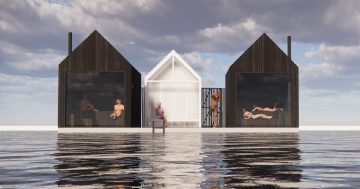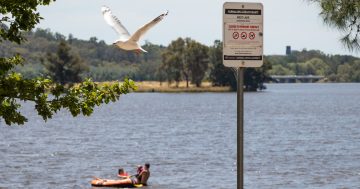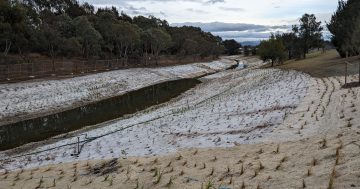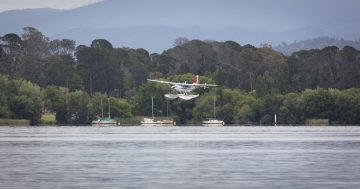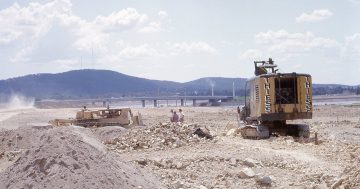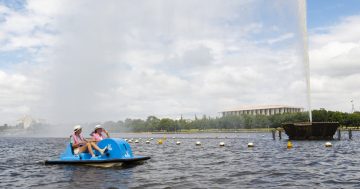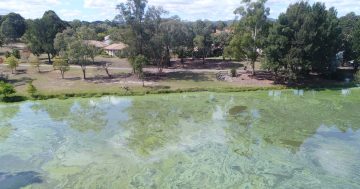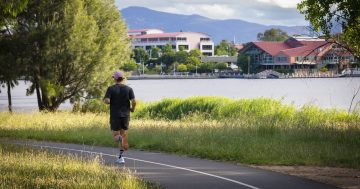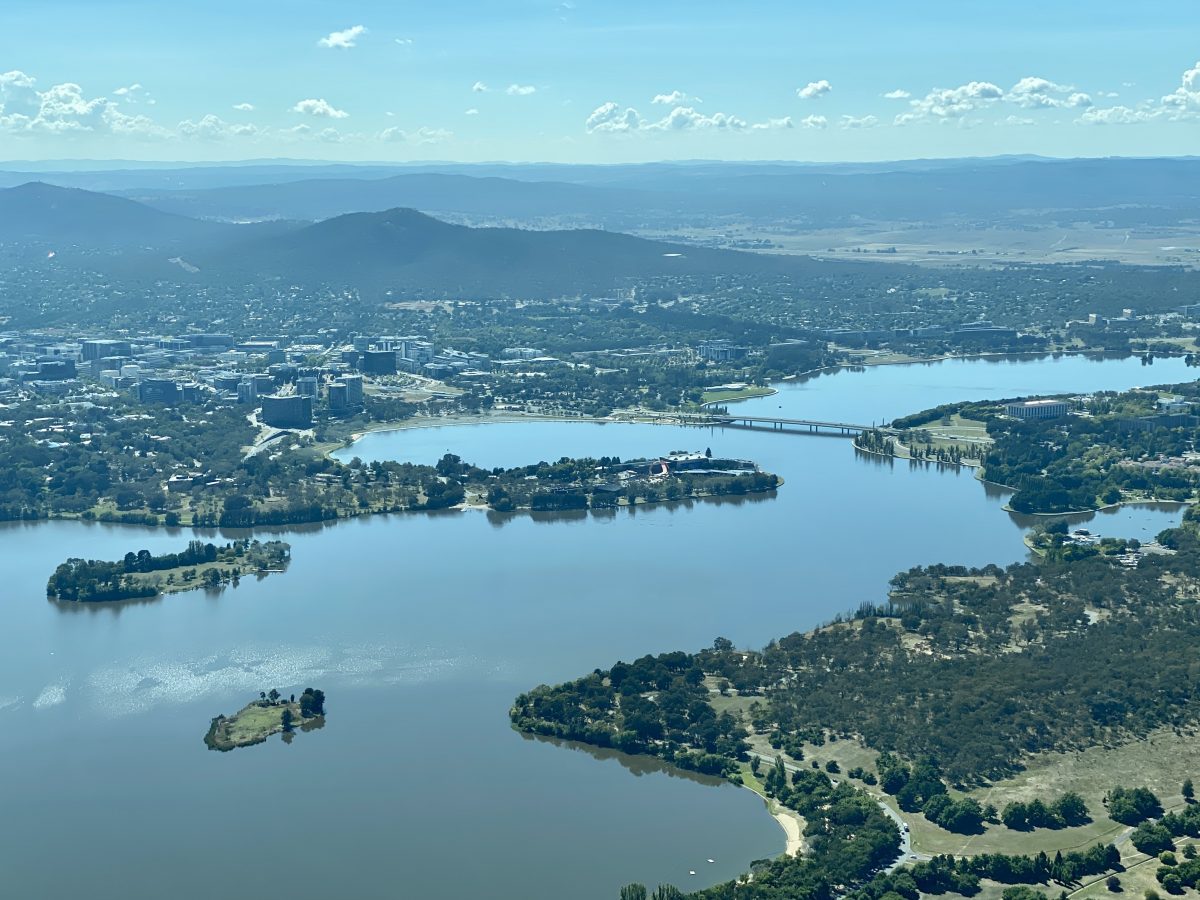
Lake Burley Griffin on a good day and still looking brown. Photo: James Coleman.
It’s been a debate for the ages.
Lake Burley Griffin is a cesspit of blue-green algae, carp, and drowned e-scooters. You swim in it only if you want to contract encephalitis. Or hypothermia. But how do we fix this, and get it looking more like a glacial fjord from Scandinavia?
The ACT Government has teamed up with the University of Canberra (UC) to at least get this process started.
Over the summer, a team of experts has taken sediment and water samples from the lake to ascertain what chemicals and nutrients it’s hiding and, of these, what needs to go and what needs to stay for the lake to become cleaner.
Dr Rodney Ubrihien, from UC’s Centre of Applied Water Science, says it’s about “targeting key knowledge gaps” and the findings will be handed to the government around mid-2025.
“We did a bit of a review on Lake Burley Griffin based on what limited data we had available in 2020, and that told us the lake is on a tipping point,” he says.
“We wouldn’t want to start introducing any more pollutants to the lake or we could end up in a worse situation.”
The news follows a report handed down from a joint-standing committee earlier this week, focussed on ways to improve Canberra as the national capital. It’s the result of 43 submissions and nine public hearings.
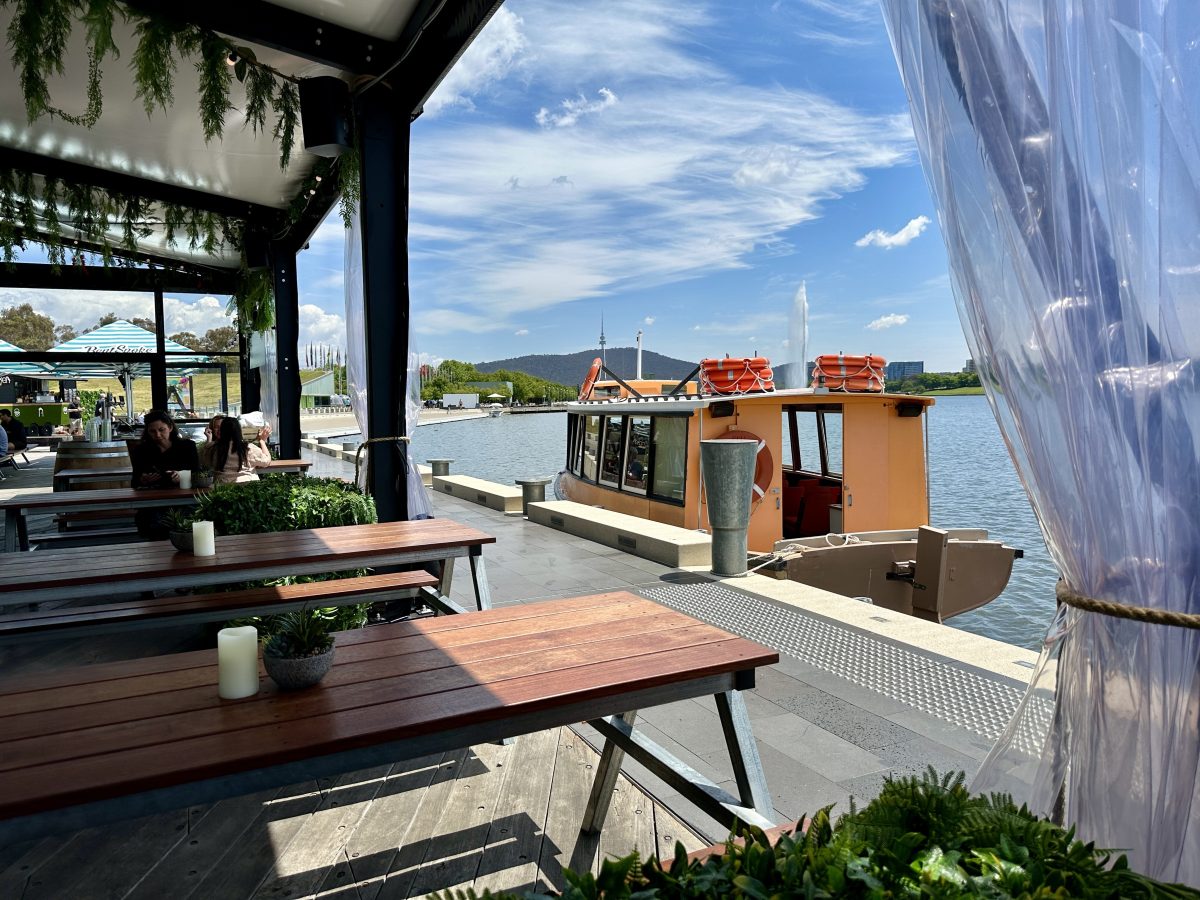
The lake sure has its pretty moments – just don’t fall in. Photo: James Coleman.
“Canberra is more than just a city, it’s a symbol of who we are as Australians and it belongs to all Australians,” committee chair and Labor Member for Canberra Alicia Payne said.
“Our 21 recommendations are a roadmap for how this significant role can be recognised, fostered, and celebrated.”
ACT senator David Pocock wasn’t convinced, however. He argued Canberra remains the least-known capital city in the developed world and the recommendations needed “more ambition and a sharper focus” for this to have any hope of changing.
His nine recommendations include burying Parkes Way to free up land along the southern shore for a stadium and “National Convention Centre with an exhibition space of at least 10,000 square metres”, and constructing a new public pool in Commonwealth Park.
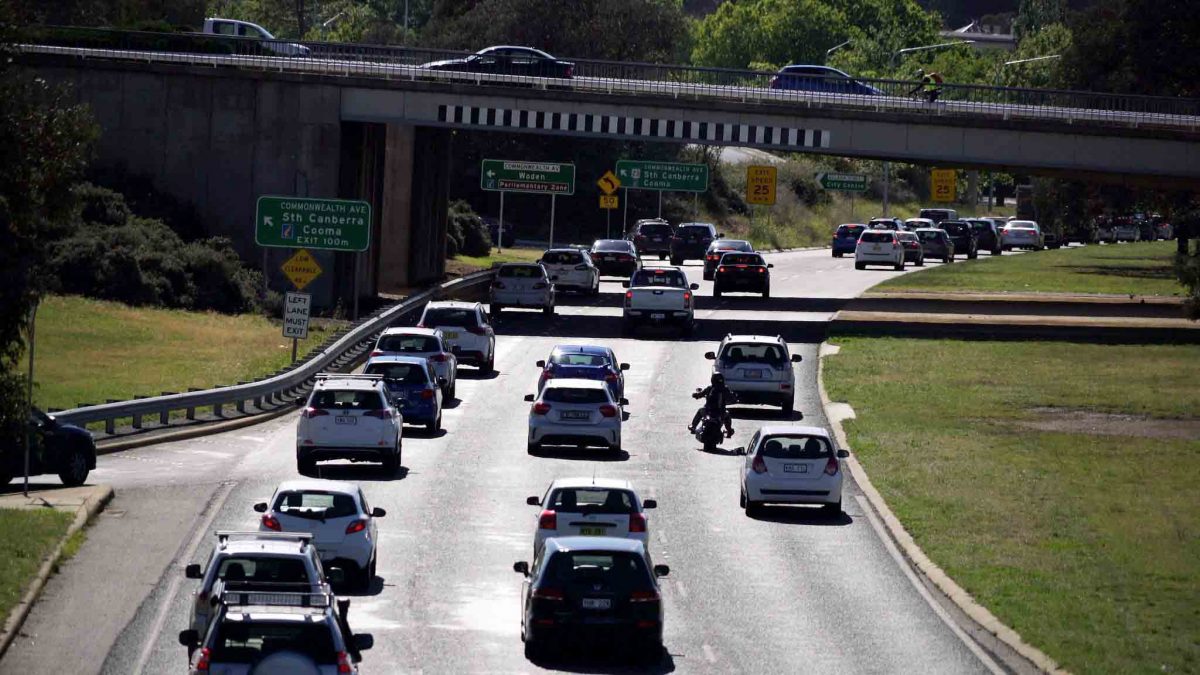
Parkes Way is one of the city’s only east to west arterial roads. Pocock wants it buried. Photo: ACT Government.
But his final recommendation also addressed the perennial question: “That the Commonwealth Government provide additional funding to the ACT Government to support its efforts in improving the quality of water flowing into Lake Burley Griffin, including by replacing the concrete stormwater systems with naturalised creeks and wetlands”.
This tactic has precedent.
UC led a research project at Lake Tuggeranong in 2019, funded by a joint ACT and Australian Government ‘Healthy Waterways’ program, which involved the construction of the Southern Hemisphere’s “largest rain garden”.
This pond and wetlands environment was designed to slow and filter the water rushing down the concrete channels and, according to a report released in the aftermath, it is “helping to clean stormwater flows entering the lake”, but also “more work is needed to address algal blooms”.
Dr Ubrihien was involved in the project and says placing natural ponds between Canberra’s urban lakes and the stormwater channels that feed them not only slows water but also “restores some of the biochemical cycles that allow the system to better process pollutants”.
But he describes Lake Burley Griffin as a “different beast” to Lake Tuggeranong.
In some ways it’s easier, because the volume of water is larger and can cope with more chemicals and nutrients passing through it. But Lake Burley Griffin is also fed by a wider variety of waterways from the natural Molonglo River to the concrete stormwater channels.
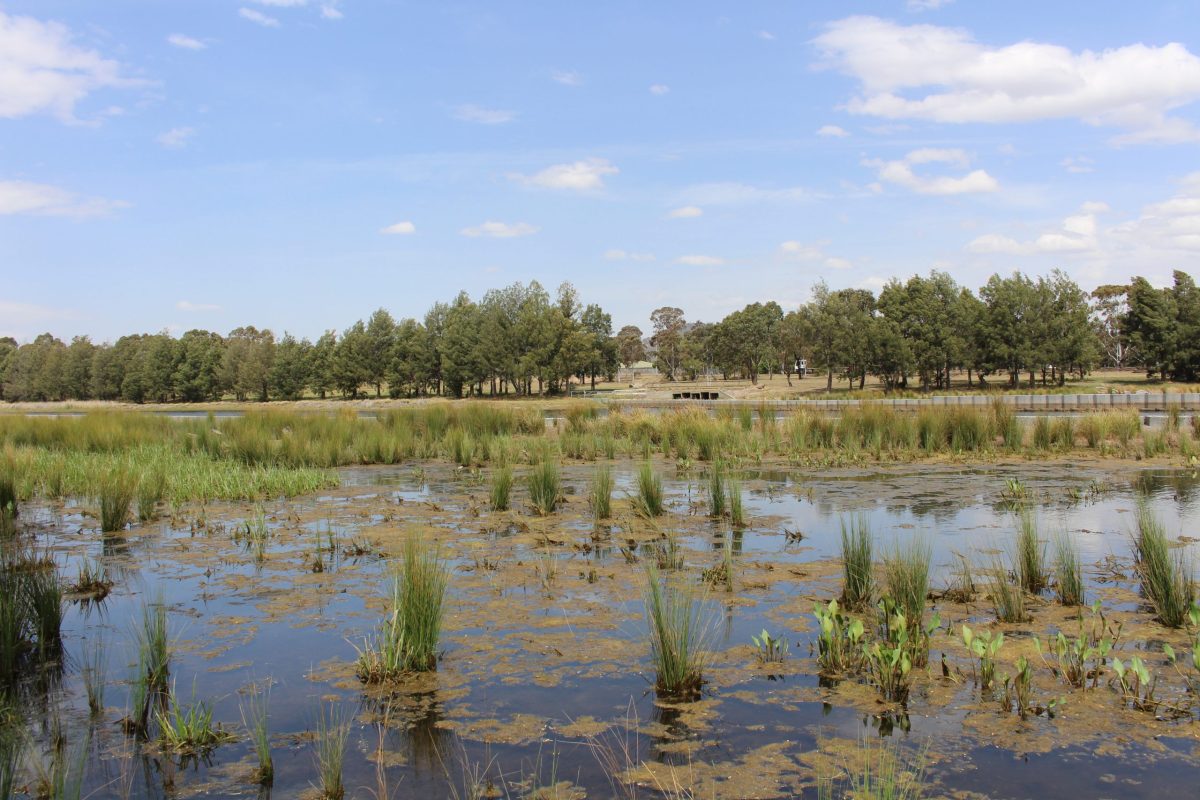
Isabella Pond, Lake Tuggeranong wetlands. Photo: Southern ACT Catchment Group.
Installing wetlands along each of these isn’t an option because of urban development that leaves little room for erosion or flooding.
“The general consensus is we need to restore our catchments, and there are things we can try like introducing freshwater mussels to help filter the water, diverting some of the water, applying certain chemicals, but none of these work effectively everywhere – every lake’s different,” Dr Ubrihien says.
“But these solutions are super expensive and once they’re in, really difficult to go back on.”
Will Lake Burley Griffin ever look like Lake Como?
“I don’t think we’re going to get there and not because we can’t necessarily get the water quality to that same level, but our natural systems just don’t tend to look like that.”












